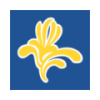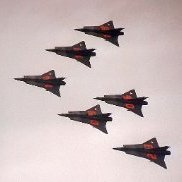Search the Community
Showing results for tags 'Rata'.
-
I-16 Type 10 ProfiPACK (8148) 1:48 Eduard The I-16 was a ground-breaking design that first flew in 1934, as it was both a monoplane, much of its structure was made from composite materials, and it benefited from having retractable landing gear. It was designed by the Polikarpov Design Bureau, and was also intended to have a totally enclosed cockpit, but Soviet pilots disliked being entirely enclosed within their aircraft, perhaps harking back to the days of open-topped biplanes, and all this was despite the freezing temperatures that they had to endure, even at zero feet. It was a small aircraft that led to some diminutive nicknames such as Burro (Donkey) or Rata (Rat), depending on where it was in service. Early variants saw action in the Spanish Civil War as well as in Chinese hands against the Japanese invaders, and by the time WWII came around they were one of the major fighters in service with the Soviet Air Force in terms of numbers. Flying against the German piloted Bf.109s of the Legion Condor during the Spanish conflict left the designers with the distinct impression that it was outclassed by larger, more modern designs, but production did not cease immediately thanks to the remaining development potential of the basic airframe. By the time the Type 10 reached production, it was fitted with four 12.7mm machine guns, two synchronised in the cowling, plus two more in the wings, firing outside the arc of the propeller. It was powered either by a Wright Cyclone R-1820 engine or an indigenous Shvetsov M-25B motor, and had a sliding canopy, which many pilots still discarded by preference to improve their situational awareness or whatever their excuses for ditching the relative comfort of a closed cockpit were. Subsequent variants improved the armament further, installing 20mm cannons for extra destructive power with the same designation just to confuse matters, and increasing the power and manufacturer of the engine, although the improvements there were evolutionary rather than revolutionary. By the middle of WWII the type was obsolete, and was retired in favour of more advanced and powerful designs. The Kit This is a re-release of the 2006 tooling of this little fighter, adding ProfiPACK goodies to the box that will help it keep up with our expectations. It arrives in a gold-themed top-opening box, and inside are four sprues of blue-grey styrene, a separately Ziploc bagged clear sprue, a fret of nickel-plated and pre-painted Photo-Etch (PE), a sheet of pre-cut kabuki-style masking material (not pictured), decal sheet, and the instruction booklet printed in colour on glossy paper, with colour profiles on the rear pages. Detail is good, but don’t expect tons of panel lines, as these aircraft were predominantly smooth surfaced, using an early iteration of composite materials, plywood impregnated with phenolic resin. Construction begins with a choice of whether to remove the cockpit door to install the PE replacement later in the build, the area for removal shown on the diagram in red. Much of the cockpit detail is applied to the fuselage side walls before the fuselage is closed, adding a choice of styrene or PE versions of the various pieces of equipment, plus twin and single exhausts protruding through the cowling from inside, gluing them according to lines shown in blue on the diagrams. Once the sidewalls are completed and painted, the fuselage halves can be mated, as the remainder of the cockpit is inserted from below before the wings are added. The cockpit floor has the two-part seat, control column and rudder pedals fitted, adding PE straps to the pedals, and four-part PE seatbelts draped over the sides. The completed floor insert is slotted into the fuselage from below, as is the instrument panel, which can either be made from the styrene panel with a decal and some PE levers, or by using a blank panel with two layers of pre-painted PE, the same PE levers, and a small laminated panel in the centre. It is slid up into position from below, just in front of the cockpit floor. The lower wings are full-span and have the main gear bays moulded-in, gluing the separate upper wings over the top, and lowering the fuselage down into the gap between them, first inserting two extra exhaust stubs through from the inside. A pair of machine guns are slotted into the wing leading-edges, and a pitot probe is mounted in the starboard wing around mid-span. The tail is created from two elevators that slot into the sides of the moulded-in fin, adding a rudder and tail-cone to the rear, and a tail-skid underneath, which all sit perpendicular to each other, as per the accompanying diagram. The engine is provided as an insert that has the fronts of the radial cylinders moulded-into it, to which a washer is added in front, supporting the PE cooling shutters. These are first detailed with a ball-pen, pushing the half-thickness lines indicated to form the strengthening ribs, then you can choose to have the shutters closed, or rotated around to allow air into the engine compartment to cool an over-stressed motor during or after a strenuous dogfight, or an urgent climb to altitude. The engine is offered up to the front cowling from behind, trapping an axle in the centre that the prop sits on later. Before the assembly is glued into the front of the fuselage, another two exhausts are slipped through apertures from within, and two fairings for the nose-mounted ShKAS machine guns are applied to recesses in the top cowlings. The main gear legs are built from a triangular strut with axle, plus a bracing strut that plug into sockets in the bay, adding a PE appliqué panel to the bay side, and the main wheel to the axle. A captive bay door is glued to the leg, and another is fitted to the retraction jack, with a third parallel to the ground at the base of the main bay door. Another small door is fixed to the base of one of the legs at the rear of the bay, and scrap diagrams show how the completed gear assembly should look, and give you the option of adding a length of 0.1mm wire to the centre of the wheel hub, providing a very simple method of retracting the landing gear. A clear gun-sight is glued to the deck in front of the cockpit with a ring sight mounted in front, covering it over with the windscreen, the location for which is shown in blue. If you have cut the access door out, the replacement PE part should be formed to match the shape of the fuselage, and is shown from the front to assist with its placement. The two-bladed prop has a stubby spinner fixed to the front, and is inserted on the axle in the front of the fuselage, applying a pair of blisters and a tube to the cowling. Markings There are four decal options included on the sheet, all with very different schemes to widen appeal. From the box you can build one of the following: Leningrad, Soviet Union, 1941 Genmjr. Ivan A Lakeev, 46 IAP, Vasilkov, Soviet Union, 1941 Soviet Union, Summer 1941 Maj. Mikhail N Yakushin, The Red Five Aerobatic Group, Soviet Union 1939 The decals are printed using a digital process and have good registration, sharpness, and colour density, with a thin gloss carrier film cut loosely around the printed areas. This means that the carrier film on their decals can be coaxed away from the printed part of the decal after they have been applied, effectively rendering them carrier film free, making the completed decals much thinner and more realistic, and obviating the need to apply successive coats of clear varnish to hide the edges of the carrier film. It’s a great step further in realism from my point of view, and saves a good quantity of precious modelling time into the bargain. Canopy and wheel masks are supplied on a sheet of yellow kabuki tape (not pictured), allowing you to cut the demarcation perfectly with little effort. Two diagrams at the end of the instructions show where each of the masks should fit, and there are also some additional strips of masking material that can be used to help you with painting. Conclusion Whilst it isn’t Eduard’s newest tooling, the lack of panel lines on the model is correct for its construction method, and the detail that is included in this boxing should result in a creditable replica with the application of some modelling skills. Highly recommended. Review sample courtesy of
-
I-16 Type 10 SPACE (3DL48157 for Eduard) 1:48 Eduard As I write this, I’ve just finished the review of this re-released Eduard kit, which you’ll be able to read here by the time I’ve finished. It’s a new boxing of a 2006 tooling, and there are some Photo-Etch (PE) parts included. If you’re a lover of detail however, here is the new SPACE set from Eduard to upgrade your model further. Eduard SPACE sets use new 3D printing techniques that lay down successive layers of different colour resin, creating highly realistic almost full complete panels that are supplied on a decal sheet. They can depict metallic shades, plus glossy, satin and matt colours too, which really ups the detail on everything they print. In addition, a small sheet of nickel-plated and pre-painted PE is included for the aspects of the set that lend themselves better to this medium, such as seatbelts and rudder pedals. The PE sheet includes a set of four-point seatbelts, plus a ring-and-bead sight to install in front of the glazed gunsight. The 3D printed sheet contains a gloriously detailed instrument panel to apply over the blank backing with glossy dial faces, and a space in the centre for a sub-panel. Two additional decals are included for the starboard cockpit side wall, one fitting directly against the fuselage, the other applied to a kit part that glues to the side wall. Conclusion Beautiful detail that is effortless to apply to your model, of a standard that very few modellers could otherwise achieve. I’m hooked on these SPACE sets for their panels and seatbelts, using them whenever I get the opportunity. Extremely highly recommended. Review sample courtesy of
-
Greeting to the community! Want to demonstrate my recently built model of I-16. Actually, I had a desire to have aircrafts of Spanish Civil war in collection long ago. But it required type 5 or 10 for I-16 and there were no decent model at the time. Of course, I couldn't resist the most attractive prototype with cartoon Popeye the Sailor at the tail, belonged to Republicans, 4 Esquadrille de Mosca pilots Morales and Zarauza (1937-38). I started this model in April (after a month of the war beginnig) and have building it for three months. I didn't even try to make any additions - wanted to relax, to be distracted from heavy thoughts and make this model fast. That's why it's mainly out of the box. Even the machine guns and pitot tube I left from the kit. Worked with it only by weekends. I'd like to show the pictures of the ready model first and then show a little bit of the construction. Sorry, if the pictures are too many. I also tried to show the model at different background.
- 18 replies
-
- 33
-

-
- civil war in spain
- mosca
-
(and 1 more)
Tagged with:
-
This I-16 was captured by the Finns during the Continuation War, it was converted to 2 seats to familiarise pilots with the Soviet Aircraft. Aircraft in the Finnish Air Force Museum, , pics thanks to Sergey (mr_stomach)
-
Prop&Jet is to release a 1/72nd Polikarpov I-16 type 4/5 & 10 Rata resin kits Sources: https://www.facebook.com/permalink.php?story_fbid=2169974153090900&id=475396205882045 https://propjet.ucoz.ru/forum/9-278-34767-16-1553238457 https://propjet.ucoz.ru/forum/9-278-34815-16-1553549028 3D renders: Type 4 V.P.
-
Polikarpov I-16 Type 28 Soviet Fighter 1:48 ICM The diminutive I-16 Rata was a ground-breaking design when first introduced, and served the Soviet Air Force well until the middle of WWII when its relatively light armament and manoeuvrability was outmatched by the Bf.109 and FW.190s. It's enclosed cockpit and fully retracting wheels gave it the edge initially, as did the reliable air-cooled engine and its nimble flying characteristics, and it was initially surprisingly successful against the earlier Luftwaffe fighter variants. The Type 28 was an evolution that along the way had already picked up a more powerful engine, additional fuel in wing-mounted tanks, proper flaps, to which was added a complement of two synchronised ShKAS 7.62mm machine guns on the upper cowling, and two more ShVAK 20mm auto-cannons on the wing leading edge for destructive power, without having to synchronise through the prop. Following the 28, came two more variants that adjusted armament and engine power, but this was pretty much the end of the line for the design. The Kit Originally tooled in 2016 by ICM, this boxing uses essentially the same plastic, but uses different parts than the Type 24 that came before it. Inside the double-lidded top-opening box that ICM favour are two sprues of grey styrene, one of clear parts, a small decal sheet and the instructions. It is a simple aircraft, which is reflected by the relatively uncrowded box. Ostensibly the same build method is used for this variant, beginning with the wings and their separate ailerons, moving on to the cockpit that is constructed within the port fuselage half, and has good detail throughout, even aft of the cockpit frame where the next section can be dimly seen. The instrument panel is nicely moulded, and the various controls attached to the sidewalls are included as small parts. A bulkhead is inserted at around the firewall position, and the fuselage is then closed up, inserting the separate rudder as you do so. The cowling around the nose machine guns is inserted, and the twin access doors are added to the fuselage sides, although you could pose one of them down if you choose. The wing assembly fits in the lower fuselage, and the well-detailed radial engine is depicted with its collector ring, piston bank and mount, plus ancillary equipment, most of which will be hidden behind the front cowling that stopped the howling wind from freezing the engine solid at speed. There is the option of leaving the cowling panels off, as they are supplied as three separate parts plus the front section, into which the baffles and the prop are inserted, the latter being able to left free to spin if you are careful with the glue. Adding the windscreen and gunsight is closely followed by the installation of the landing gear with its complex (for the time) bay covers captive to the legs. The wheels are each two piece, and have smooth tyres with slightly domed hub caps. The final act is the installation of the larger cannons in the wing leading-edge, leaving the smaller machine guns on the sprues. Markings If you like your Ratas Russian Green with blue undersides, you're in luck. There are two options in this scheme, one with a yellow 15 and a white lightning bolt on the tail, the other a white 51 on the fuselage. From the box you can build one of the following: 45th Aviation Division, Southern Front, Odessa Area, Late June 1941 72nd Mixed Regiment of the Northern Fleet Aviation, August 1941 The decals are well printed with vibrant colours, and registration is excellent. The majority are a rich red, but the white and yellow decals look opaque, with a fractional over-printing of the yellow around the white under-printing that will disappear on the green. Conclusion It's a nice, workmanlike kit of a workmanlike little aircraft that took on the Luftwaffe during the early days of Operation Barbarossa. Detail is excellent, and there's a lot to like about the kit. Review sample courtesy of
-
Started something totally new for me, a prop plane! First one a small kit, Eduard's I-16 Weekend edition in Spanish Republican marking of the Spanish civil war 1936-1939 as it is supposed to be build in a single weekend, construction was easy and straight forward, small and simple cockpit that will be nearly totally hidden in the fuslage, sorry no photos! ready for painting: hope you like it, I do a lot!, it is really small





